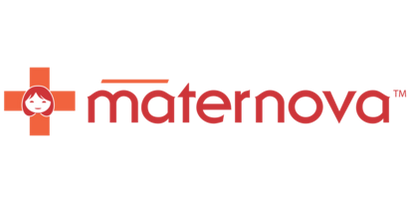Add description, images, menus and links to your mega menu
A column with no settings can be used as a spacer
Link to your collections, sales and even external links
Add up to five columns
Add description, images, menus and links to your mega menu
A column with no settings can be used as a spacer
Link to your collections, sales and even external links
Add up to five columns
Heart Strings: Lessons in Being With Women part II
October 29, 2016 3 min read
I believe that when we remove midwifery from community, we risk losing midwifery altogether.
One day while we were acting out a birth scenario where a baby was extremely distressed at birth, we talked about how helpful it would be for the midwives to be able to count fetal heart tones. If a traditional midwife could determine in advance if a baby was in distress, she may be able to resolve the situation or have time to make a transfer. Without knowing how to count, how would a midwife learn to count heart tones? For those of us who learned to count diligently in elementary school, it is hard to imagine a world that is not ordered by numbers that correlate to days and times. The midwives shared that they track their menstrual cycles with a string of beads that is cycled to the moon. This way of knowing makes sense in an area where there is no electricity and women still bleed with the moon.
My partner midwife Olivia was with us at that meeting and she thought of the abacus. This is how the Heart String was dreamed up. We made a string of color-coded beads that midwives could use to assess fetal heart tones. For every heartbeat, the midwife ticks off a bead and then after 15 seconds (we use sand timers), look at what color bead they have landed on. White beads mean the FHT is too low. Green beads, FHT is in a range of normal. Red beads, the FHT is too high. We then developed protocols for what to do in instances where heart tones are too low or too high. The strings were almost immediately understood and used with great accuracy, because it is a way of understanding that correlates to traditional systems of knowledge. Over the last several years, we have used the Heart Strings with traditional midwives in several countries and have been overwhelmed with their success. Midwives who previously could not tell the difference between a high-risk mother and a low risk mother were able to make appropriate medical decisions prior to a bad outcome, thereby avoiding
catastrophe and saving lives.
I still wonder if there is a way to honor ‘different ways of knowing’ when we think about education, especially in a community that is not our own? When we think critically about barriers to maternal and child health, we must understand the history and context of the places in which we stand and we must question methods that ‘bestow’ knowledge upon others. There is no one answer to the crisis that faces women around the world, but one thing I know for sure is that one on one care and support is not only achievable, it is imperative to good outcomes. We don’t need tons of money or fancy equipment. To stand with women, we must be ‘with women’. We need good old-fashioned, ‘hands on’ care. The kind that women give to other women. The kind that mothers give to their babies. The kind that nurtures and sustains. The kind that thrives on and in community.knowledge upon others. There is no one answer to the crisis that faces women around the world, but one thing I know for sure is that one on one care and support is not only achievable, it is imperative to good outcomes. We don’t need tons of money or fancy equipment. To stand with women, we must be ‘with women’. We need good old-fashioned, ‘hands on’ care. The kind that women give to other women. The kind that mothers give to their babies. The kind that nurtures and sustains. The kind that thrives on and in community.
Endnote: Dear reader, if you cite the HeartStrings, please give credit to the inventors at Mother Health International and to this page where you first read about it, Maternova. Remember that the HeartStrings are patented, and that this page, like every page on the web, has terms and conditions associated with its content and proper citation!
Leave a comment
Comments will be approved before showing up.
Also in The Maternova Blog
Pumani bubble CPAP
November 11, 2025 1 min read
The Pumani bubble CPAP was engineered by a team at Rice University in Texas, working in collaboration with clinicians in Malawi. A range of specific design considerations made the Pumani especially appropriate for low-resource settings so that parts are easy to replace.
The MaternaWell Tray for PPH estimation now appears in key obstetric guidelines
October 30, 2025 1 min read
A 'tray' is now mentioned in the FIGO/WHO/ICM Consolidated Postpartum Hemorrhage Guidelines published by in 2025, expanding the type of monitoring device from drape to drape or tray.
Is it ethical to separate mother and infant just after birth?
October 28, 2025 2 min read
Immediate skin to skin care means less than ten minutes after the infant takes its first breath, the infant, naked except for a diaper, spends at least one hour on the mother’s chest, against her skin. It is recommended that preterm and low birth weight kangaroo care involve prolonging contact beyond the first hour for at least 8 hours per day or as long as possible (up to 24 hours) per day

